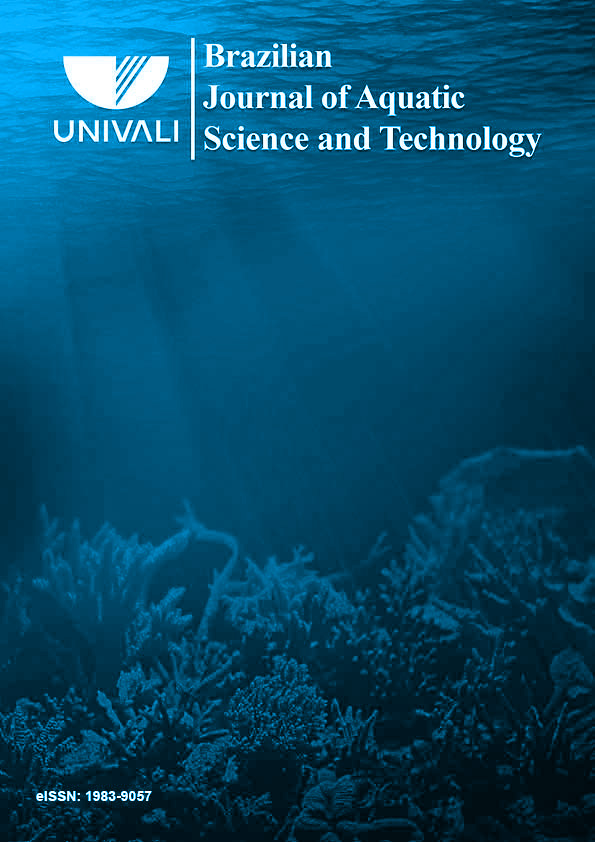Effect of Garlic extract on physiological and biochemical parameters of Rhamdia quelen and their response to an infestation with Ichthyophthirius multifiliis
DOI:
https://doi.org/10.14210/bjast.v23n1.13470Abstract
The aim of the study was to investigate the effect of garlic extract on hematological, immune and metabolic systems of Rhamdia quelen juveniles and the animals’s resistance to Ichthyophthirius multifiliis. The fishes were fed twice daily during 77 days with diets containing 0%, 0.5%, 2.5% and 5% of garlic extract. After that, half of the animals of each treatment were submitted to the challenge with the parasite I. multifiliis, maintaining the diets. The other half of the animals were maintained in the original system receiving the dietary supplementation. The use of garlic extract in the diet did not promote significant changes in glycaemia, hepatic glycogen content, tissue and plasma aminotransferase activities, and tissue lipid peroxidation levels. On the other hand, it stimulated the synthesis of muscle glycogen and promoted a reduction of hepatic catalase activity. In terms of hematological and immune systems, the use of garlic extract increased the number of red blood cells, but reduced hemoglobin content. Furthermore, it was not able to change the total number of leukocytes and thrombocytes, but it promoted an increase in the number of basophils and reduced the monocyte count of the animals. The dietary supplementation with garlic extract did not act as a growth promoter for silver catfish juveniles, did not influence the basal metabolic homeostasis, immune or hematological responses of the fishes and did not improve the resistance to the infestation with the I. multifiliis in the concentrations and periods studiedDownloads
Published
Issue
Section
License
Authors who publish with this journal agree to the following terms:
1. Authors retain copyright and grant the journal right of first publication with the work simultaneously licensed under a Creative Commons Attribution License that allows others to share the work with an acknowledgement of the work's authorship and initial publication in this journal.
2. Authors are able to enter into separate, additional contractual arrangements for the non-exclusive distribution of the journal's published version of the work (e.g., post it to an institutional repository or publish it in a book), with an acknowledgement of its initial publication in this journal.
3. Authors are permitted and encouraged to post their work online (e.g., in institutional repositories or on their website) prior to and during the submission process, as it can lead to productive exchanges, as well as earlier and greater citation of published work (See The Effect of Open Access).

